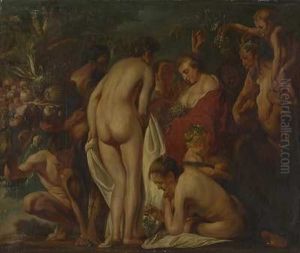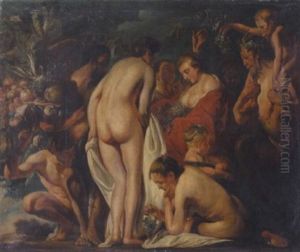Otto Arpke Paintings
Otto Arpke was a German graphic artist, typographer, and illustrator whose work became particularly notable during the early 20th century. Born on September 9, 1886, in Hannover, Germany, Arpke's artistic journey began in an era where the interplay between art and industrial production was becoming ever more pronounced due to the influences of movements such as Art Nouveau and later, Art Deco.
Arpke's work was characterized by a unique blend of traditional craftsmanship and modernist design principles. He received his education at the Kunstgewerbeschule, or School of Applied Arts, in Munich, which was an important center for the Arts and Crafts Movement and later for the burgeoning modernist aesthetic in Germany. This educational background provided Arpke with a foundation in the practical aspects of design and an appreciation for the decorative arts.
Throughout his career, Arpke was known for his book designs, commercial graphics, and typefaces. He was particularly adept at creating ornamental and decorative designs which were used in a variety of applications, from book covers and illustrations to advertisements and typeface design. His work often exhibited a strong sense of line and color, and he had a talent for integrating text and image in a cohesive and visually appealing manner.
Among his contributions to typography, Otto Arpke is credited with designing a typeface called 'Arpke Antiqua'. This typeface reflects his penchant for combining clarity with decorative elements, making it both functional for reading and aesthetically pleasing in form.
Arpke's career spanned a period of great change in the world of graphic design as it transitioned from the elaborate flourishes of Art Nouveau to the streamlined simplicity of Art Deco and the functionality of the New Typography movement. Despite these changes, Arpke maintained a distinctive style that managed to remain relevant and influential.
The outbreak of World War II and the subsequent changes in Germany had an impact on many artists of the time, and Arpke's later years were overshadowed by the turmoil of the era. Otto Arpke passed away in 1943, amid the throes of the war. His legacy endures in the collections of graphic design aficionados and institutions that study the evolution of typography and graphic art in the 20th century. Although not as widely known as some of his contemporaries, Arpke's work represents an important bridge between the artisanal roots of graphic design and the modernist movement that dominated the mid-century aesthetic.

